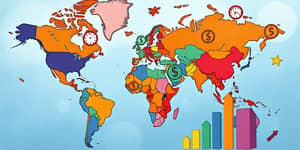
Early 2025 painted a stark picture: household wallets tightened, inflation expectations soared, and spending growth sputtered. Yet, as the second quarter unfolds, signs of revival emerge. This article examines the nature of the rebound, its underlying causes, and what lies ahead for consumers, businesses, and policymakers. Drawing on the latest BEA data, expert forecasts, and corporate earnings guidance, we provide actionable insights and pragmatic advice to help stakeholders navigate the shifting economic tide.
In early Q2, monthly BEA data shows improvement: March +0.7%, April +0.2%, even as May dipped slightly. Many economists now forecast roughly 3% GDP growth in Q2, reversing the contraction felt in Q1. The rise in consumer spending correlates with easing inflation pressures and improving wage trends. Furthermore, the University of Michigan sentiment index has recovered some ground, suggesting consumers feel more confident about near-term economic conditions and may be ready to open their wallets.
Stories from Main Street reinforce the numbers. From family-owned diners reporting steadier lunch crowds to local retailers noting an uptick in weekend foot traffic, the anecdotal evidence mirrors the broader trend. Such grassroots indicators remind us that behind every data point lies a person reevaluating their budget, balancing aspiration with practical necessity. It is this collective shift in behaviour that ultimately fuels macroeconomic recovery.
Several factors combine to support renewed consumer momentum. Foremost, steady job growth and low unemployment have sustained income levels even as prices fluctuate. Core PCE inflation has cooled to 2.3% year-on-year in May, its lowest level since late 2021, giving households more real purchasing power. Meanwhile, many companies that pre-stocked inventories ahead of tariff hikes have exhausted those buffers, leading to a normalization in retail supply chains and stimulating fresh ordering cycles. However, underlying challenges remain and warrant careful monitoring.
The interplay between consumer sentiment and spending creates a feedback loop that can accelerate or hinder growth. When households believe their financial future is secure, they tend to allocate more toward discretionary items—vacation packages, dining experiences, and home renovations—that ripple through the economy. Conversely, lingering fears about inflation or job security can cause even those with healthy savings to adopt a conservative stance. Recognizing this dynamic empowers both policymakers and business leaders to craft strategies that instill confidence and channel it into sustainable spending patterns.
The rebound is uneven across categories. Durable goods, which contracted sharply by 3.8% in Q1, continue to face headwinds from elevated borrowing costs and stretched household budgets. In contrast, nondurable goods and services have been more resilient, with services spending projected to grow by 1.5% in 2025. Telecommunication and healthcare services, in particular, are driving stable demand thanks to ongoing consumer needs that prove less discretionary than durable purchases.
Energy and transportation services have also demonstrated resilience, as consumers prioritize travel and mobility following the lifting of various pandemic-era restrictions. Meanwhile, digital subscriptions and streaming services continue to draw steady revenue, reflecting an ongoing appetite for entertainment and remote connectivity. These patterns underscore a broader shift: while big-ticket durable purchases may stall, everyday services and experiences often carry through economic cycles with surprising robustness.
This breakdown highlights the contrast between product and service categories. While durable goods remain under pressure from financing constraints, services continue to fuel overall spending growth, benefiting from less susceptibility to tariff shocks and long-term rate increases.
Companies have adapted to shifting consumer patterns in early 2025 by fine-tuning inventories and adjusting pricing strategies. Retailers that pre-empted tariff hikes by stockpiling imports have finally cleared excess stock and now contend with rising input costs. To maintain margins, many have implemented modest price increases, risking further consumer pushback if inflation worries resurface. Meanwhile, brands with strong loyalty programs and value propositions are capturing a larger share of wallet among cautious shoppers seeking the best perceived deals.
In earnings calls, executives have underscored the importance of agile supply chains and predictive analytics that can adapt to sudden policy changes. Investment in predictive analytics and vendor diversification has become more than a competitive edge—it is a necessity. By closely monitoring consumer sentiment indices and leading indicators such as durable goods orders, companies can preempt shifts in demand and calibrate their offerings accordingly. Such foresight not only cushions the impact of external shocks but also positions firms to capitalize on emerging opportunities as consumer behaviour evolves.
As Q2 unfolds, several risks could dampen the fledgling rebound. Tariffs scheduled for later in the summer threaten to filter into final prices, testing consumer resilience once more. Additionally, credit card and auto loan delinquency rates are inching higher, pointing to potential stress among households with limited cash buffers. On the other hand, anticipated Federal Reserve rate cuts in late 2025 could ease borrowing conditions, rekindling demand for big-ticket items and durable purchases.
For businesses, the key lies in agile inventory management and dynamic pricing models that reflect real-time cost shifts without eroding customer trust. Investing in digital tools that forecast demand more accurately can reduce the risk of overstock or stockouts, optimizing working capital. For consumers, maintaining a balanced budget and leveraging lower-rate financing options can help sustain discretionary spending, even if price pressures linger.
For individual consumers, adopting a forward-looking mindset can make a tangible difference. Simple steps—such as tracking monthly spending, renegotiating high-interest debt, and building an emergency cushion—can enhance financial resilience. Businesses, meanwhile, should view Q2’s rebound as an invitation to innovate, refining product lines and service offerings to align with the evolved preferences of a post-pandemic economy. By fostering a culture of continuous learning and adaptability, organizations can better weather the uncertainties that lie ahead.
Ultimately, the story of Q2’s consumer spending rebound is one of cautious optimism, grounded in data yet animated by human resilience. As households and businesses alike navigate the ebb and flow of economic forces, the choices made today will shape the contours of tomorrow’s growth. Armed with insight, agility, and a collaborative spirit, stakeholders can transform challenges into opportunities and write the next chapter of sustained prosperity.
References













